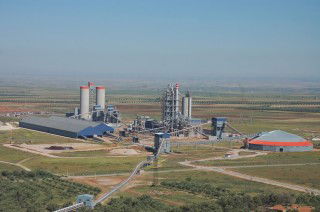Leaving behind a past of political unrest and financial mismanagement, Gambia is at the start of an exciting new chapter. Led by a new, democratically-elected government and witnessing an upturn in construction, the country is about to open its first cement production facility.
As the smallest country on the African mainland by area, Gambia’s economy relies heavily on tourism and agriculture. No wonder then that the Ebola crisis and poor harvest of 2014 led to a stagnation of economic growth that year with GDP improving by just 0.9 per cent. The economy picked up in 2015 with a rebound of 4.3 per cent, but estimates for 2016 were revised down from 4.3 to 2.2 per cent when the country’s political situation took a turn for the worse.
Presidential elections in December 2016 saw the incumbent President Yahya Jammeh, who had led the country for 22 years following a military coup in 1994, defeated by Adama Barrow of the United Democratic Party. When Jammeh refused to cede power, Barrow took refuge in Senegal. After weeks of pressure from regional players and the threat of military action, the former president eventually admitted defeat and Barrow returned to the country to be sworn in as president on 19 January 2017.
